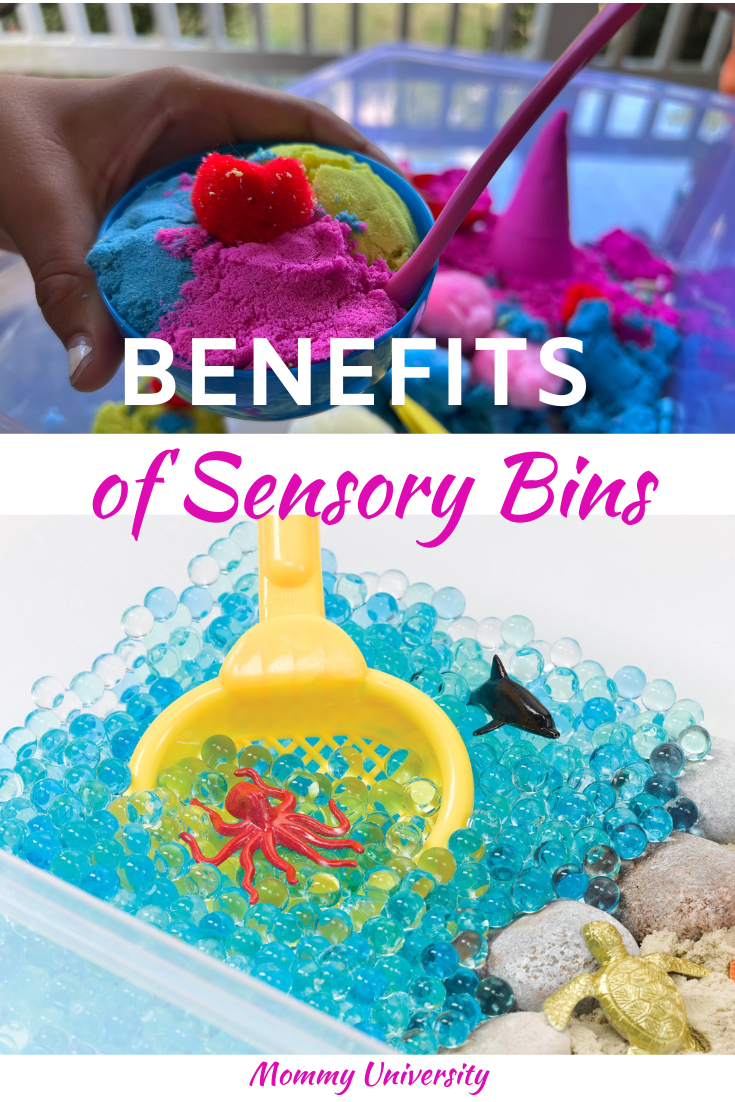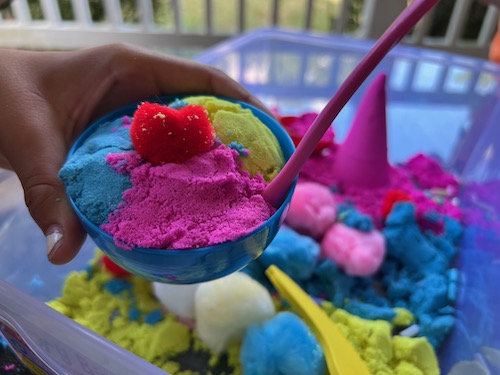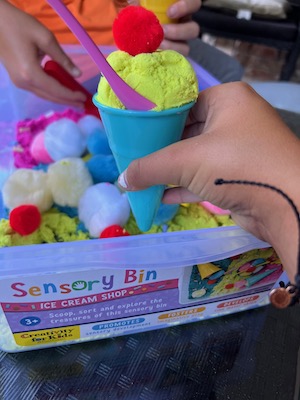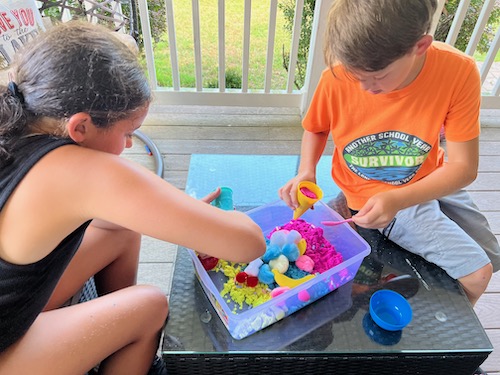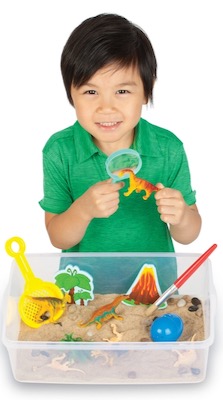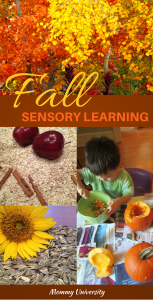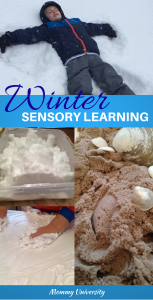Kids learn best when engaging all of their senses. That’s why hands-on learning is so important beginning at a young age. That’s also why encouraging opportunities for children to learn through play is critical. Play allows children to use all of their senses to explore their environment and develop important skills. One of the BEST ways for little ones to play and learn is by using sensory bins!
For those that don’t know, a sensory bin is exactly what it sounds like. It is a bin filled with items that engage the senses. Sensory bins can be big or small, purchased or made at home. A sensory bin usually has a theme to grab a child’s attention as well. It starts with a filler, such as sand, rice, or water beads (just to name a few). Then you can add small toys. Most also include some kind of scoops, cups, or clasping object. Sensory bins do not come with directions as to allow kids to play and learn freely.
Benefits of Sensory Bins
Introduces Academic Skills
As kids play, they are being introduced to basic academic concepts such as colors and shapes. You can expand their learning even more by asking them to count the objects or point to specific colors. With the Creativity for Kids Sensory Bins, you can choose fun themes that increase knowledge in the areas of space, the ocean, and even construction.
Encourages Pretend Play
My favorite thing about sensory bins is that they encourage pretend play! I love just watching kids turn the smallest toy into the greatest adventure. Engaging in pretend play helps build so many skills and leads to a love of learning.
Enhances Fine and Visual Motor Skills
Sensory bins are perfect for enhancing fine motor skills. While picking up the toys, creating scenes, scooping sand, and searching through the bin, kids are developing important fine and visual motor skills needed to be successful in school. You will see your child’s hand-eye coordination improve as well as their ability to visually scan and discriminate. These are all tasks needed to learn to read and write.
Increases Language Development
Whether it is through questions, conversations, or spontaneous talking, playing with sensory bins helps increase language development in children. At first, they are learning to label objects, but as time goes on they tell stories and ask questions. As a parent, engage your child in conversations about their play, such as “what kind of ice cream do you like?” or “What is your favorite ocean creature?” You will be amazed at how much they will learn through play!
Fosters Creativity
Sensory bins spark the imagination and fosters creativity. At first, kids may just move the objects around but eventually you will see them creating their own little worlds and stories. It is especially fun to see kids play together with a sensory bin.
Helps Build Social Skills
Although sensory bins can be played with alone, they are also fun with friends and family. They are actually the perfect addition to a preschool and kindergarten classroom. Playing together teaches kids to take turns and listen to other people’s ideas. They learn to work as a team which helps build important social skills.
Encourages Cause and Effect
“If I do this, then this happens, Mom!” I love hearing that from my kids. That means they are thinking which builds their cognitive skills. Sensory bins offer opportunities for kids to play with cause and effect which later turns into a love of science. Playing with cause and effect also helps kids develop problem solving skills which will help them in school and in life!
Creativity for Kids is one of my absolute favorite toy companies for kids. All of their products foster play and learning. That is why I am so excited to share their Sensory Bin line. Each bin is unique and sparks the imagination. Kids can play for hours while building important developmental skills. You can find their sensory bins on Amazon.
You may also enjoy:
